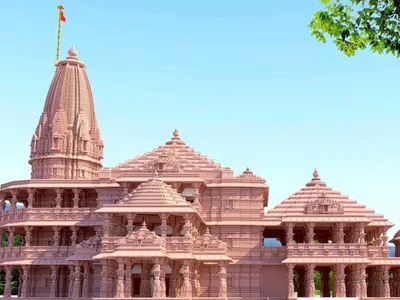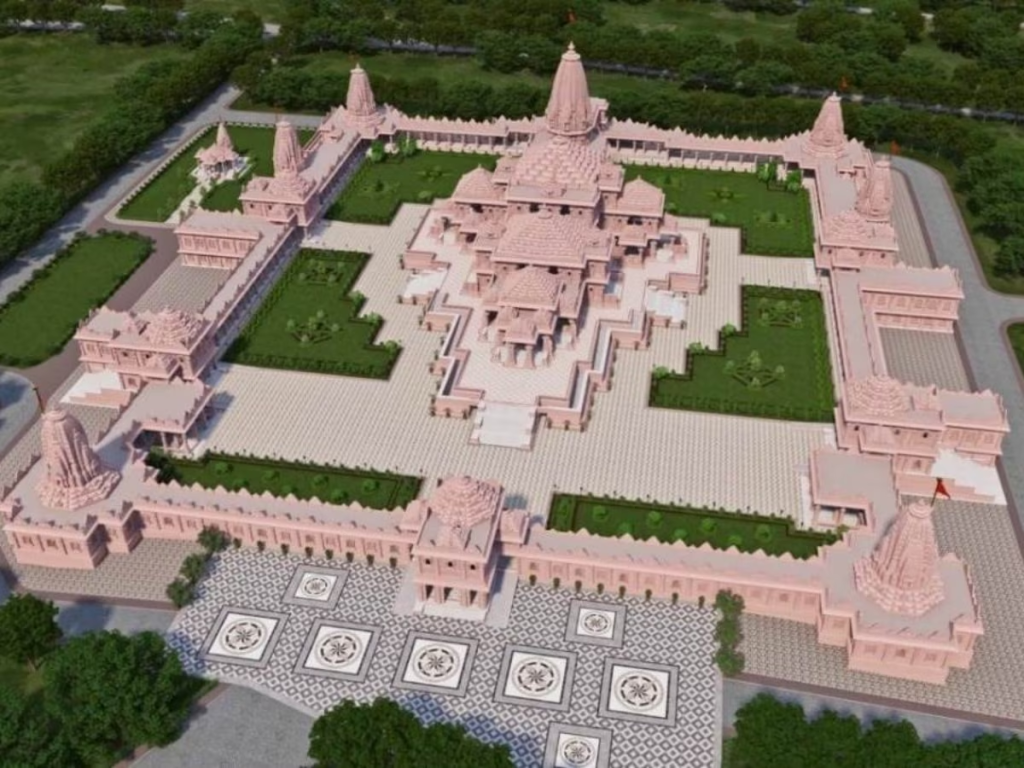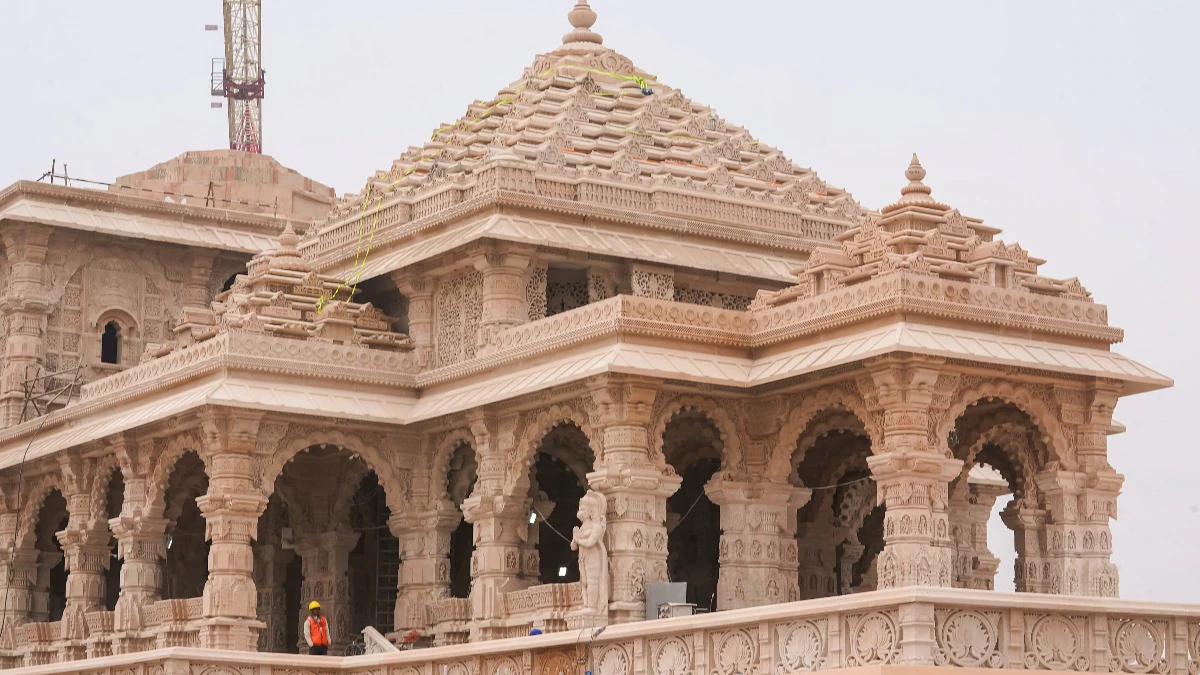In the spiritual heartland of Ayodhya, a monumental project is underway – the construction of the Ayodhya Ram Mandir. This Hindu temple, situated in Uttar Pradesh, India. Holds profound significance as it is being built at the rever site of Ram Janmabhoomi. The Shri Ram Janmabhoomi Teerth Kshetra trust governs the Ayodhya Ram Mandir Current Status construction. Entrusting Larsen & Toubro (L&T) with the responsibility. Civil construction officially commenced on August 5, 2020, following a Bhoomi Poojan ceremony.
Current Progress:
As of the latest updates, the Ayodhya Ram Mandir is well into its final phase. The construction team has successfully completed approximately 70% of the groundwork, marking a significant milestone. The remaining percentage of construction is expected to finalize shortly. Additionally, the team has achieved around 40% completion of the roof work, giving the temple a tangible form and shape.
Renowned architect Chandrakant Sompura, along with his sons, meticulously designed the Ayodhya Ram Mandir. The new design, created in 2020, builds upon the original design from 1988. This meticulous planning adheres to both vastu shastra and shilpa shastras, ensuring the temple’s spiritual and architectural significance.

Temple Specifications:
The grandeur of the Ayodhya Ram Mandir is reflected in its impressive dimensions. Standing at 161 feet high and 235 feet wide, the temple spans a total area of 2.7 acres. With a built-up area of 57,400 sq.ft., the temple is designed with three floors, supported by 366 columns. These columns, adorned with 16 idols each, pay homage to the incarnations of Chausath Yoginis, Shiva, Sarasvati, and Dashavataras. The 12 gates and 16-feet-wide stairs add to the majesty of this upcoming religious landmark.
Construction Timeline and Opening Date:
The Ayodhya Ram Mandir has been making steady progress since the groundbreaking ceremony in 2020. The current phase is expected to be completed by 2024, with the official inauguration and opening of a section scheduled for January 25, 2024. Leading up to this momentous event, a pran pratishtha ceremony will be conducted from January 15 to January 24, culminating in the attendance of Prime Minister Narendra Modi on January 24. This ceremony marks the consecration of the temple, infusing it with divine energy and sanctity.
The overall completion deadline for the entire project is set for December 2024, as officially stated by the authorities managing the construction. This deadline underscores the commitment to delivering a magnificent temple that will stand as a symbol of faith and devotion for generations to come.

Recent Developments and Challenges:
In the midst of the ongoing construction, the Ayodhya Ram Mandir faced a temporary pause in 2020 due to the global COVID-19 pandemic. However, with determination and resilience, the construction resumed, and significant progress has been achieved. Recent pictures shared by the General Secretary of Shri Ram Janmabhoomi Teerth Kshetra showcase the grandiosity of the temple even in its unfinished state, capturing the imagination of devotees and enthusiasts alike.
To expedite the construction process, 17,000 granite stones weighing approximately 2.50 tonnes each were sourced from Bharatpur’s Bansi Pahadpur area. These stones, arriving at Ayodhya daily from Rajasthan, contribute to the plinth construction of the temple. The trust overseeing the project has implemented modern security tools for surveillance, ensuring the protection of this sacred space.
Anticipation and Spiritual Significance:
As the completion of the Ayodhya Ram Mandir draws nearer, the anticipation among devotees across India is palpable. The temple, slated to be taller than 160 feet upon completion, is poised to become the third-largest Hindu shrine. Beyond its physical dimensions, the Ayodhya Ram Mandir holds profound spiritual significance, expected to attract devotees from all corners of the country.
The temple’s three levels will house not only the main sanctum but also five mandapas adorned with shikhara, a prayer hall, museum, lecture hall, cafeteria, and more. The expansive 2.7-acre land allotted to the temple ensures that it becomes not just a religious destination but a cherished cultural and spiritual hub.

Read Also : Ram Mandir Trust SBI Bank Account Number
Conclusion:
In conclusion, the Ayodhya Ram Mandir stands as a testament to the unwavering faith and dedication of millions. The meticulous construction process, guided by the Shri Ram Janmabhoomi Teerth Kshetra trust and executed by L&T, reflects the commitment to delivering a temple that transcends architectural brilliance and becomes a beacon of spirituality.
As the construction advances towards its completion in 2024. The Ayodhya Ram Mandir is set to take its place among the most rever religious landmark in India. The opening ceremony on January 25, 2024, will mark a historic moment, inviting devotees to witness the culmination of years of aspiration and devotion. The Ayodhya Ram Mandir, with its majestic design and spiritual resonance, is poised to become a symbol of unity, faith, and cultural heritage for generations to come.







